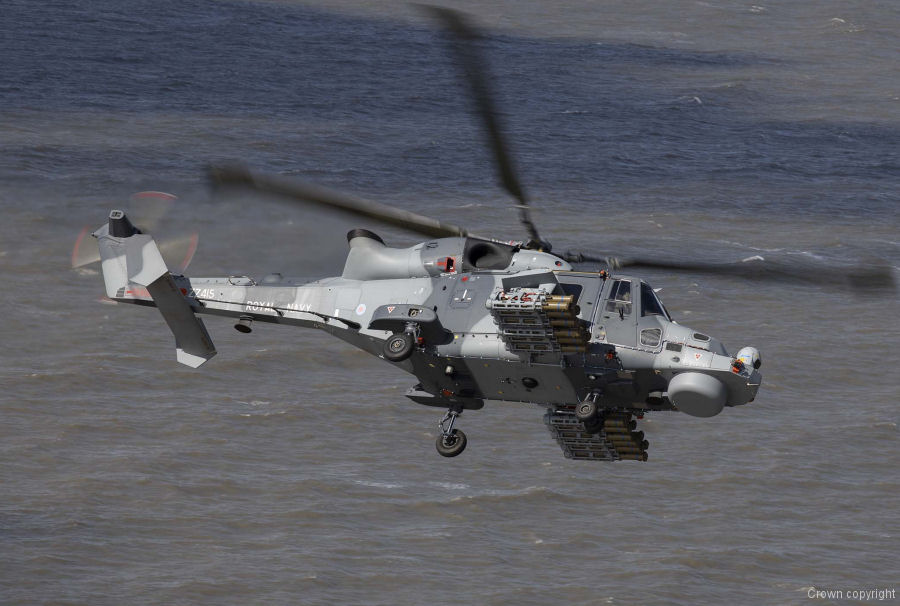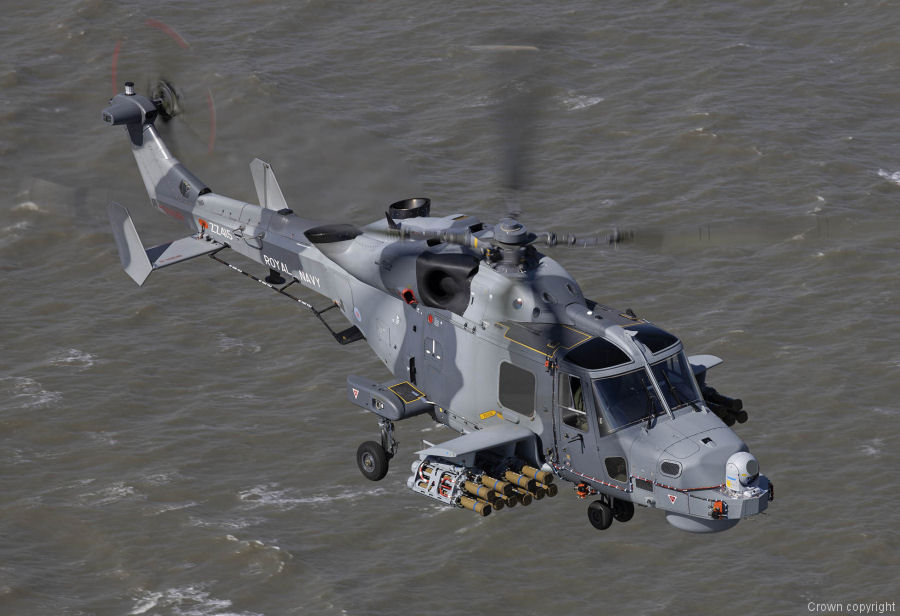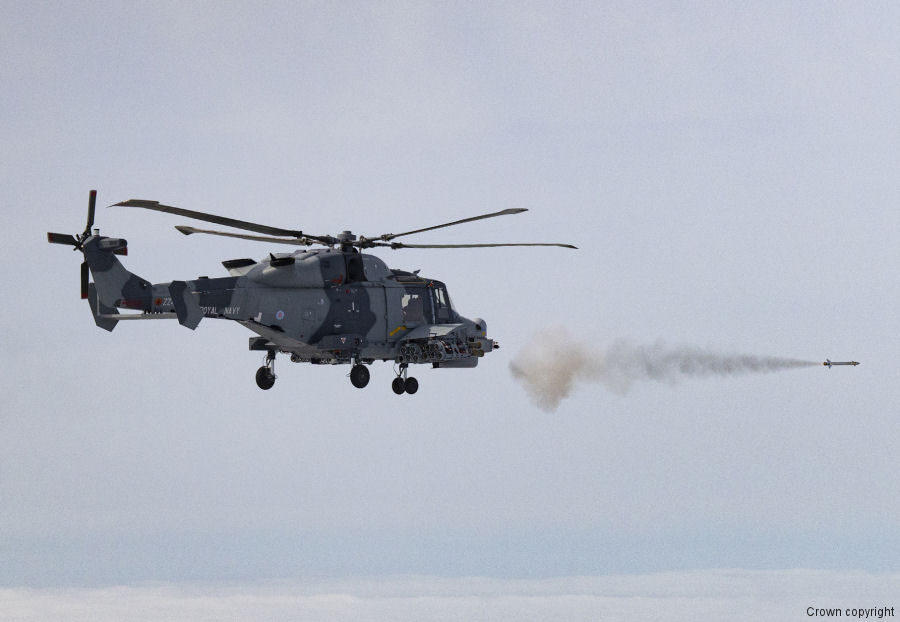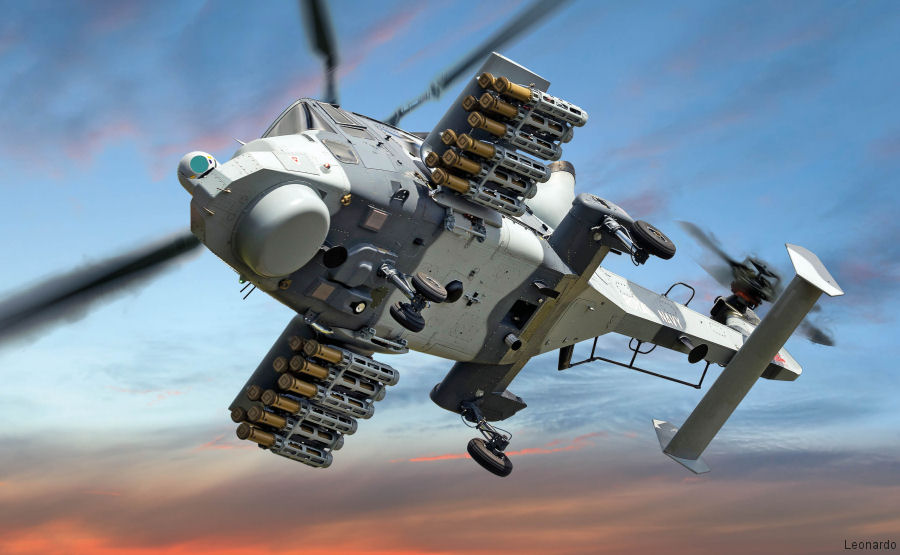
As sailors and marines support the current national fight against COVID-19, the Yeovilton-based Wildcat Maritime Force, which includes 815 Naval Air Squadron, is focused on ensuring the UK is prepared for future global threats.
Blasting from a Wildcat helicopter, the new Martlet missile was this week tested on a range off the coast of Wales.
In 0.3 seconds, the missile detached from the Wildcat HMA Mk2 helicopter, accelerating to one and a half times the speed of sound.
The trials mark an important milestone in the testing of the new system which will arm the Wildcat helicopters that deploy as part of HMS Queen Elizabeth’s maiden operational deployment next year.
Commander Matt Boulind Royal Navy, the Wildcat Maritime Force Commander, said: “This test firing shows the Wildcat helicopter will be ready to help defend our Queen Elizabeth-class carriers and their strike groups for years to come.
“The Royal Navy and Army introduced Wildcat helicopters into service five years ago and the firing of the Martlet this week is a very significant milestone and represents a huge success for the joint industry and MoD team.
“This firing underpins future Royal Navy offensive capability and the defence of the surface fleet.”
Leonardo AW159 Wildcat helicopter conducts first successful firings of Thales ‘Martlet’ Lightweight Multirole Missile (LMM)
Leonardo - May 26, 2019 - Leonardo and Thales are proud to announce the first successful firings of the Thales ‘Martlet’ Lightweight Multirole Missile (LMM) from Leonardo’s AW159 Wildcat helicopter. The firings were conducted as part of the UK MoD’s Future Anti-Surface Guided Weapon (FASGW) programme and demonstrated the integration of the Martlet onto the AW159 platform. This represents a major milestone for the programme and will enable this high-end capability to enter service with the Royal Navy later this year.
The firing trials were conducted from 27th April to 21st May 2020 and despite the current COVID-19 situation, Leonardo and Thales were able to support the UK Ministry of Defence by completing this critical activity. All of the teams involved had to adopt strict distancing procedures, in some cases having to find new ways of working, in order to make sure that the trials could go ahead. It is a testimony to the professionalism of those involved that these trials were successfully completed under such challenging and novel circumstances.
“This major milestone demonstrates that the combination of the AW159 Wildcat and Martlet missile will be a flexible and effective tool for the Royal Navy. Next year the Wildcat fleet will embark on Carrier Strike Group missions with HMS Queen Elizabeth on its maiden operational deployment. As the only British company to design and manufacture helicopters on-shore, we’re extremely proud to be equipping the UK Armed Forces with world-beating sovereign capabilities.” said Nick Whitney, Managing Director of Leonardo Helicopters (UK).
“The successful live firings of the Thales LMM Martlet from the AW159 Wildcat is a key milestone in the programme, delivering a significant step-change in capability for the platform. LMM Martlet will ensure that the Wildcat has the best-in-class offensive capability to protect HMS Queen Elizabeth and her task group during her maiden operational deployment next year. With each platform capable of carrying up to 20 Martlet, the Wildcats deployed with the task group will be a significant deterrent to anyone wishing to interfere with UK interests.” said Philip McBride, General Manager, Integrated Airspace-protection Systems, Thales UK.
In July 2014, Leonardo signed a contract with the UK Ministry of Defence to integrate, test and install the MBDA Sea Venom (heavy) and Thales LMM (light) missile systems onto Royal Navy AW159 Wildcat helicopters, a programme called Future Anti Surface Guided Weapon (FASGW).
The FASGW (light) part of the programme has now seen the LMM, with its associated launcher and airborne laser guidance unit, successfully integrated into the Leonardo AW159 Wildcat sensor, displays and avionics systems. The LMM provides a step-change in capability for the Royal Navy which, in the maritime environment, faces a major challenge in engaging smaller, fast-moving, asymmetric threats, due to their high mobility, their small thermal and radar signatures and the severe background clutter encountered. The LMM is capable of surmounting these issues where traditional electro-optic and radar guidance systems do not provide the certainty of hit required.
On-board the AW159 Wildcat platform, the LMM Martlet could also allow operators to engage air targets such as UAVs and other maritime helicopters.
The launchers are mounted to the AW159 via the new Leonardo Weapon Wing, developed at the Company’s design and manufacturing facility in Yeovil and first trialled last year. Each weapon wing will be able to carry either ten Martlet or two Sea Venom missiles and generates additional lift for the helicopter in forward flight, reducing demands on the main rotor.
The twin-engine multi-role AW159 is able to conduct missions ranging from constabulary to high end warfighting where it has the capability to autonomously detect, identify and attack targets on land and at sea, including submarine threats. The high-performance platform has state-of-the-art systems, including a Leonardo Seaspray multi-mode electronically-scanning (E-scan) radar, and integrated electronic warfare Defensive Aids Suite (DAS).
Over 50,000 flight hours have been logged by the helicopter. The AW159 has also been chosen by the British Army, the Republic of Korea Navy and the Philippine Navy as a new maritime operator of the helicopter.
About Leonardo: Leonardo, a global high-technology company, is among the top ten world players in Aerospace, Defence and Security and Italy’s main industrial company. Organised into five business divisions, Leonardo has a significant industrial presence in Italy, the United Kingdom, Poland and the USA, where it also operates through subsidiaries such as Leonardo DRS (defense electronics), and joint ventures and partnerships: ATR, MBDA, Telespazio, Thales Alenia Space and Avio.
Leonardo competes in the most important international markets by leveraging its areas of technological and product leadership (Helicopters, Aircraft, Aerostructures, Electronics, Cyber Security and Space). Listed on the Milan Stock Exchange (LDO), in 2019 Leonardo recorded consolidated revenues of €13.8 billion and invested €1.5 billion in Research and Development. The Group has been part of the Dow Jones Sustainability Index (DJSI) since 2010 and became Industry leader of Aerospace & Defence sector of DJSI in 2019.
About Thales: Thales is a global technology leader combining a unique diversity of expertise, talent and cultures. Our architects design and deliver decisive technologies for decisive moments in five markets: Defence & Security, Digital Identity and Security, Aerospace, Space, and Ground Transportation.
In 2018, the company generated revenues of €19 billion with 80,000 employees in 68 countries. With its 30,000 engineers and researchers, Thales has a unique capability to design, develop and deploy equipment, systems and services that meet the most complex security requirements. Thales in the UK is a team of over 6,500 experts, including 4,500 highly skilled engineers, located across 10 key UK sites. In 2018, Thales UK’s revenues were around £1.3 billion. Each year Thales invests over £575 million into its UK supply chain, working with over 2,000 companies.
With a heritage of over 130 years, Thales in the UK understands the importance of developing skills for the future, which is why they have over 400 apprentices and graduates across the UK. Thales is committed to supporting its people, and continuously developing talent, and highly skilled experts.
Lightweight Multirole Missile - LMM (Martlet)
The Lightweight Multirole Missile - LMM (Martlet) is a new lightweight, precision strike, missile, which has been designed to be fired from airborne and ground tactical platforms in surface, ground attack and air defence roles; thus the multirole element of the name.
The missile, sealed in its canister and designed to be maintenance free for 15 years’ storage, consists of a two-stage motor, warhead and dual mode fuse, together with guidance electronics and a highly accurate control actuator system. A combined fragmenting and shaped charge warhead provides proven lethality against a wide range of conventional and asymmetric light skinned and armoured threats.
The unique LMM laser guidance beam, generated from a sophisticated Laser Transmitter Unit (LTxU), projects low power coded signals direct to the LMM in flight thus ensuring precision engagement, command override and immunity against countermeasures.
In the naval domain, the system has been designed to counter the challenging threats ranging from Jet Skis and Fast Inshore Attack Craft (FIAC) to larger maritime combatants.
In 2019 Thales and the Royal Navy conducted a series of successful LMM (Martlet) ship-launched firings from a Type 23 frigate against a representative target set. These firings confirmed that LMM (Martlet) offers a mature, low-cost, high value solution to strengthen the inner layer defence capability of surface ships through re-use of current investment and the commonality and modularity between the helicopter and ship-based systems.



AW159 Wildcat HMA2 ZZ415 ( Fleet Air Arm )
See also |
AW159 Wildcat HMA2 in
815 NAS
FASGW Missile Integration for Royal Navy AW159
Royal Navy Wildcat Tests Martlet Missile




